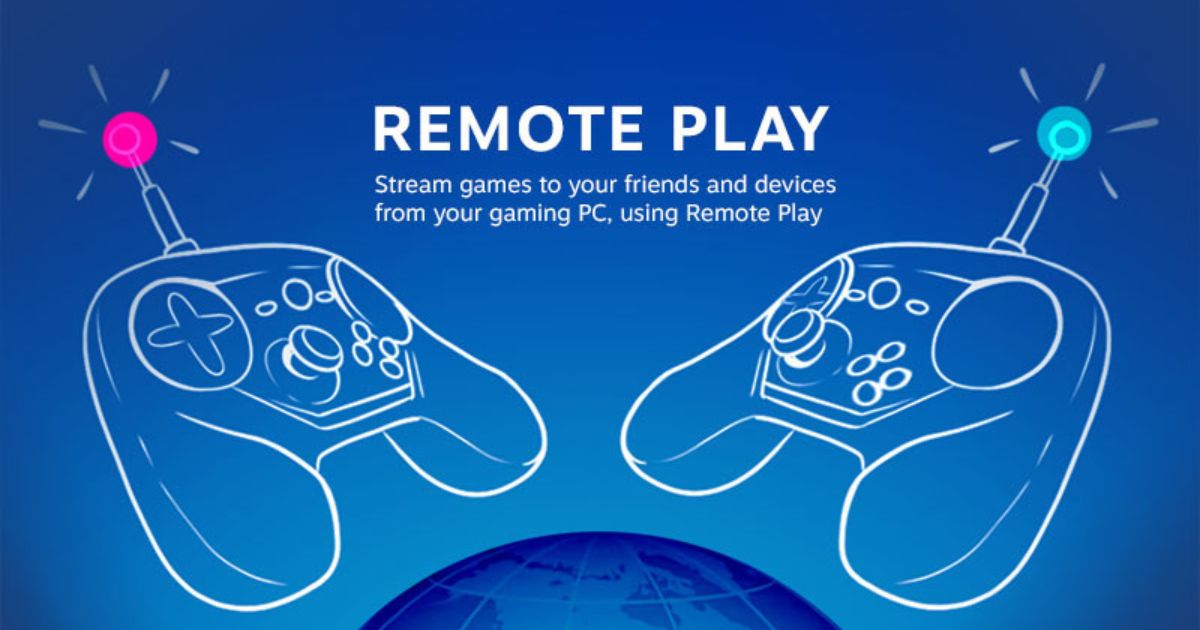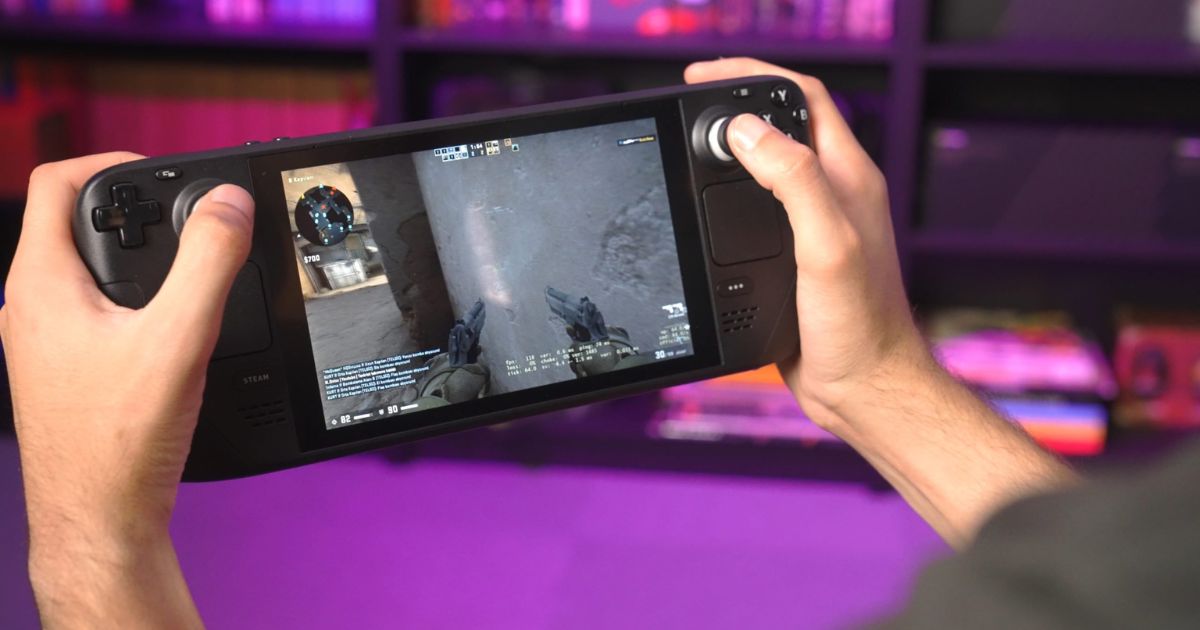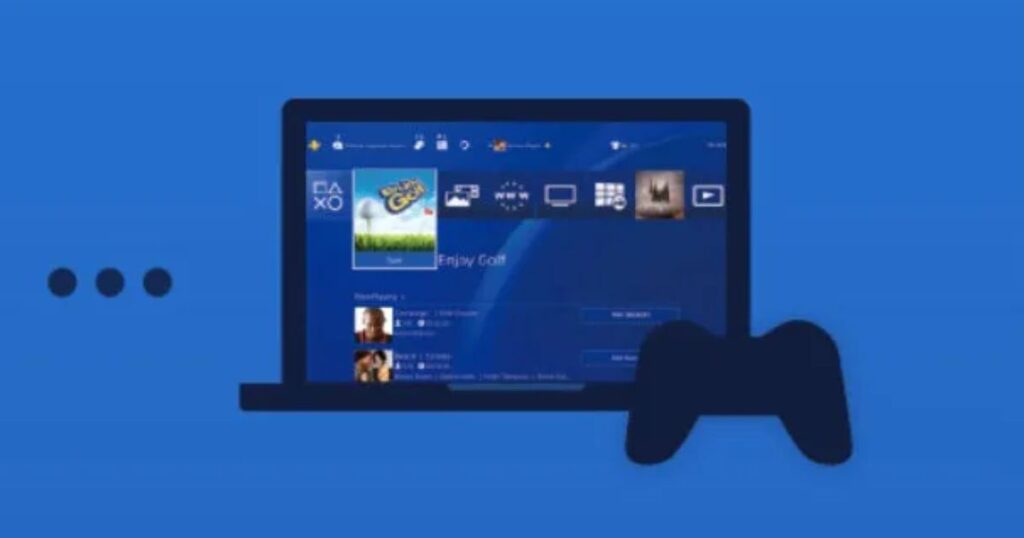Steam remote play together steam laggy has revolutionized the way gamers enjoy local multiplayer games online. Instead of gathering physically, you can now invite friends over the internet to play co-op or competitive games as if they were sitting right next to you.However, many users experience lag, latency, or stuttering, which can ruin the fun. Lag in Remote Play Together can stem from internet issues, hardware limitations, or improper settings.In this guide, we’ll explore why Steam remote play together steam laggy gets laggy and provide practical tips and fixes to ensure a smooth and enjoyable online gaming experience with your friends.
What Is Steam Remote Play Together?
Steam Remote Play Together is a feature from Steam that allows you to play local multiplayer games online with friends, even if they don’t own the game. It turns a local co-op game into an online multiplayer session by streaming the game from the host’s PC to your friends’ devices.
Here’s how it works:
- The host player runs the game on their PC.
- Friends can join the session remotely through Steam, even if they only have the Steam client installed.
- Input from guests, such as keyboard, mouse, What Is the Y Button on the Wii or controller commands, is sent back to the host in real-time.
Key benefits:

- Play any local multiplayer game online without additional setup.
- No need for friends to own the game.
- Supports controllers, keyboard, and mouse input from remote players.
Requirements:
- A stable internet connection is required for both the host and the guest.
- The host PC should have decent performance to handle streaming and gameplay simultaneously.
- The Steam client is installed on all participants’ devices.
Common Reasons for Lag in Steam Remote Play Together
Experiencing lag while using Steam remote play together steam laggy windows 11 is a common issue that can interfere with gameplay. Video stuttering, delayed inputs, or choppy audio are all examples of lag. Knowing the reasons will enable you to debug and improve performance. Here are the most common reasons:
1. Poor Internet Connection
- Lag often occurs when a frequent problem interferes with gameplay. Video stuttering, delayed inputs, or choppy audio are all examples of lag. Knowing the reasons will enable you to debug and
- High latency (as measured by ping) or frequent packet loss can cause noticeable delays.
- Streaming a game requires consistent upload speed from the host and download speed for the guest.
2. Wireless Network Issues
Interference and instability may be introduced when Wi-Fi is used in place of a conventional Ethernet connection.
- Several gadgets connected to the same network can utilize bandwidth, resulting in lag during streaming.
3. Background Applications
- Applications running in the background (like streaming apps, downloads, or updates) can consume bandwidth and CPU, reducing game performance.
- Even browser tabs or cloud backups can contribute to lag.
4. Hardware Limitations
- The host PC must handle both the game and the streaming process.
- Older or underpowered hardware may struggle to encode and transmit video in real-time, resulting in stuttering and latency.
- Guests with low-spec PCs may experience input delays or low frame rates.
5. High Graphics Settings
- Running a game at ultra-high graphics while streaming can overload the host PC.
- High-resolution textures, complex shaders, and advanced effects increase CPU/GPU load, causing lag for both the host and guests.
6. Steam Server or Regional Issues
- Sometimes lag is not on your end, but due to Steam server congestion.
- Remote players, who are physically distant from the host, may experience higher latency due to network routing.
7. VPN or Network Restr
- ictionsUsing a VPN can increase ping and reduce streaming quality.
- Some networks (like public Wi-Fi) may restrict peer-to-peer connections, impacting Remote Play performance.
How to Reduce Lag in Steam Remote Play Together

Lag can ruin the fun of playing co-op games online, but there are several ways to optimize steam remote play together lag fix for smoother performance. Here’s how:
1. Optimize Your Internet Connection
- Instead of using Wi-Fi, use a physical Ethernet connection for the host and guest. Wired connections are more stable and faster.
- Close bandwidth-intensive applications, such as downloads, streaming, or cloud backups, to conserve bandwidth.
- Check your internet speed. Ideally, the host should have a minimum upload speed of 5 Mbps, and guests should have a minimum download speed of 5 Mbps.
2. Adjust In-Game Graphics Settings
- Lower graphics settings, such as resolution, shadows, and textures, to reduce CPU/GPU load on the host PC.
- Frame rate cap: Limiting FPS can help maintain smoother streaming without overloading the system.
3. Stream Settings in Steam
- Open Steam > Settings > Remote Play > Advanced Host Options.
- Enable “Enable hardware encoding” if supported by your GPU.
- Reduce streaming resolution or bandwidth limit if the connection is slow.
4. Close Background Applications
- Shut down unnecessary apps on both host and guest devices.
- Ensure no downloads or updates are running during gameplay.
- Disable overlay applications (such as Discord overlay and screen recorders) that consume CPU or GPU resources.
5. Optimize Network for Low Latency
- Avoid peak hours whenever possible, as network congestion can lead to increased lag.
- Use a 5GHz Wi-Fi band if a wired connection is not available — it’s faster and more stable than the 2.4GHz band.
- Consider port forwarding for Steam if persistent latency issues occur.
6. Hardware Upgrades
- If lag persists, the host PC may require a more powerful CPU, GPU, or RAM to handle streaming efficiently.
- Guests with low-spec PCs may experience input delay; upgrading their hardware or lowering stream settings can help.
7. Avoid VPNs During Gameplay
- VPNs can increase ping and reduce stream quality.
- Use a VPN only if necessary, and select a server located near the host.
Advanced Fixes for Persistent Lag in Steam Remote Play Together
If you’ve tried basic optimizations and still experiencesteam remote play low latency networking these advanced fixes can help ensure smoother gameplay and reduce latency for both host and guest players.
1. Update the Steam Client and Game
- Always keep Steam and the game updated to the latest versions.
- Updates often include performance improvements, Best Two Player PC Games to Play in 2025 bug fixes, and streaming optimizations.
2. Update Graphics Drivers
- Lag can occur if the host or guest GPU drivers are outdated.
- Update drivers from NVIDIA, AMD, or Intel, depending on your graphics card.
- Ensure the host PC supports hardware encoding for improved streaming quality.
3. Enable Hardware Encoding
- Steam allows hardware-based video encoding, which offloads the task from the CPU to the GPU.
- Navigate to Steam > Settings > Remote Play > Advanced Host Options > Enable “Hardware Encoding”.
- This reduces CPU load and improves stream quality and frame rate.
4. Adjust Host and Guest Performance Settings
- On the host PC: Close unnecessary apps, set Power Mode to High Performance, steam remote play unplayable Steam Deck vs ROG Ally: Your Best Gaming Buddy and ensure that the GPU/CPU aren’t throttled.
- On guest PC: Close background apps, turn off overlays, and lower stream resolution if needed.
5. Use a Dedicated Gaming Network
- Use a dedicated router or LAN segment for gaming.
- Limit other devices using the same network to reduce bandwidth competition.
6. Check Regional or Server Issues
- Sometimes lag is due to congestion on the Steam server or the distance between the host and guest.
- Choose friends geographically closer to the host for lower latency.
7. Reinstall Steam or Game as Last Resort
- Corrupted files may cause persistent issues.
- Reinstall Steam or the affected game to restore optimal performance.
Tips for a Smooth Remote Play Experience

Even after optimization and advanced fixes, following these practical tips can help 3DS How to Make Large SD Cards Not Lag you maximize performance and minimize lag when using Steam Remote Play Together:
1. Prioritize a Wired Connection
- Always use Ethernet instead of Wi-Fi whenever possible.
- If Wi-Fi is the only option, use the 5GHz band for connections that are quicker and more reliable.
2. Limit Background Bandwidth Usage
- Pause downloads, streaming services, or cloud backups during gameplay.
- Close unnecessary browser tabs and apps that consume bandwidth.
3. Optimize Game Settings
- Lower graphics settings, such as resolution, shadows, and textures, to reduce the host PC’s load.
- Cap FPS if needed to maintain stable streaming performance.
4. Test With Fewer Players First
- Start a session with one guest to fine-tune settings.
- Gradually add more players to monitor performance.
5. Upgrade Host PC Hardware if Necessary
- A powerful CPU and GPU improve gameplay and streaming performance.
- Ensure the host PC has enough RAM to handle multiple streams efficiently.
6. Keep Software Updated
- Keep Steam, game, and drivers updated for the latest performance improvements.
7. Schedule Play During Low Network Traffic
- Playing during off-peak hours reduces internet congestion.
- Guests on slower networks benefit from sessions when fewer Windows 10 vs Windows 11: Which Is Better for Gaming in 2025 devices are using bandwidth.
8. Communicate With Guests
- Ask guests to close heavy apps and use wired connections.
- Clear communication helps coordinate smooth gameplay.
Conclusion
Lag can occasionally ruin the fun, but Steam Remote Play Together is a great way to play local multiplayer games online with pals. Poor internet connections, hardware constraints, high graphics settings, or background apps are the usual causes of lag.By taking the actions described in this tutorial, from optimizing your internet connection to adjusting game and streaming settings, enabling hardware encoding, and implementing advanced fixes such as updating drivers and performance tweaks, you can significantly reduce lag and enjoy smoother gameplay.
Additionally, simple tips such as using wired connections, limiting background bandwidth, testing with fewer players, and scheduling sessions during periods of low network traffic can make a noticeable difference.With the right combination of preparation, optimization, and communication, Steam Remote Play Together can provide seamless, enjoyable co-op gaming for you and your friends, regardless of their location.
FAQ
1. Can I use Steam Remote Play Together on Wi-Fi?
Yes, but for the smoothest experience, a wired Ethernet connection is recommended. Wi-Fi can work, but interference and bandwidth issues may cause lag.
2. How much internet speed do I need?
Ideally, the host should have a minimum upload speed of 5 Mbps, and the guests. For stability, the download speed should be at least 5 Mbps. Streaming. Higher speeds reduce lag further.
3. Does the host PC affect guest performance?
Yes. The host PC streams the game, so its CPU, GPU, and RAM impact frame rate, smoothness, and latency for guests.
4. Can lag be fixed if Steam servers are slow?
Partial improvement is possible by optimizing your settings, reducing the stream resolution, or scheduling gameplay during off-peak hours; however, some latency is dependent on the server location.
5. Is Remote Play Together suitable for competitive games?
It works best for co-op or casual games. Competitive games requiring low latency may experience input delay, so it’s less ideal for high-speed competitive gameplay.






